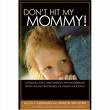Today we explored Judith Herman's text, Trauma and Recovery, with each group member focusing on a particular chapter to present to the group. Folks had really interesting insights and important critiques of the work, and we are planning to continue the discussion next week as well. People came up with some very "meaty" questions, so here's a short list of the questions that arose from the Herman readings (by chapter):
1. Can there be progression in the field of "trauma" without political movements (such as war veterans/rape survivors) to support/demand changes?
2. How else may people respond to trauma--other than the PTSD framework with clusters of symptoms: hyperarousal, constriction, intrusion?
3. Is restitution an accurate way of talking about recovery?
4. What does liberation from captivity mean for the survivor?
5. What is the role of subjectivity and objectivity in this work? Is there an appropriate role or place for subjective/"poetic" descriptions of abuse?
6. Is there a difference (or what are the differences) for individuals between a single event trauma and a repeated or prolonged trauma history?
7. What should the healing relationship (with a professional) look like?
8. Herman makes a case for creating safety first, then working on issues. What about cases in which environmental safety is not reasonably feasible (dangerous neighborhood, school, other factors)? How can we help people to increase/seek safety?
9. How can we "manage the trauma narrative" or help people open up their wounds to the degree that is is helpful and then close the session? How can we handle clients whom we may not see again who are sharing intense material? How can we respond to the "doorknob phenomenon" in which a person drops an emotional bomb just before leaving the office?
10. What is the process of healing like when it isn't as "neat and rosy" as Herman describes in her optimistic and strengths-based description?
11. Herman proposes setting up groups for people who have experienced trauma as time-limited, and distinct in terms of task (safety, reconnection, etc). How might this design impact participants? What is the relevance of group continuity, and should support groups be designed to stay together as cohesive units through the healing process rather than being segmented in chunks?
* A recurring question/critique of Herman's work was her use of gender pronouns: particularly the word "she" was used to refer to victims and helpers, and "he" to refer to soldiers. Does this leave out male survivors of violence and trauma (especially sexual abuse)? Does this "essentialist" framework with the gender pronouns reflect a bias on Herman's part? Does it bias the reader in terms of what groups of people are readily accepted as "victims/survivors"?
Topics List: Spring 2008
- VIOLENCE, TRAUMA AND SOCIAL WELFARE COLLOQUIUM
- Week 1: Introduction and Self-Care
- Week 2: Historical and Theoretical Perspectives
- Week 3: Biopsychosocial Impact of Trauma
- Week 4: Violence Against Women
- Week 5: Religion, Race, Ethnicity, and Violence
- Week 6: Etiologies of Violence; Perpetrators of Intimate Partner Violence
- Week 7: Child Sexual Abuse; Suicide and Self-Harm
- Week 8: War, Crimes Against Humanity, and Genocide
- Week 9: Poverty and Violence in Oakland & Bayview-Hunter's Point
- Week 10: Rape as a Weapon of War; Violence Against LGBT people
- Week 11: Interventions for Trauma (with Greg Merrill)
- Week 12: Child-Parent Psychotherapy
- Week 13: Truth & Reconciliation in the Aftermath of Violence (with David Androff)
- Week 14: Violence, Trauma and Social Work (student presentations)
Subscribe to:
Post Comments (Atom)
Who Are You? (check all that apply)
How did you find this blog?
Links to Browse & Buy Books
Trauma and Recovery

by Judith Lewis Herman
Don't Hit My Mommy

by Alicia Lieberman and Patricia Van Horn
Violence: A National Epidemic

by James Gilligan
Ayaan Hirsi Ali
- Submission Part 1 (a short film in which the words of the Koran are written on women's bodies as they speak their stories of violence and trauma)
- "Infidel" (her autobiography of growing up a refugee and becoming a member of the Dutch Parliament)
- "The Caged Virgin" (her essays about women and Islam)
- Ayaan's Personal Web Page
- Wikipedia (good summary of her life, philosophy, and work)
Submission
Ayaan Hirsi Ali

from the cover of "Infidel"







No comments:
Post a Comment